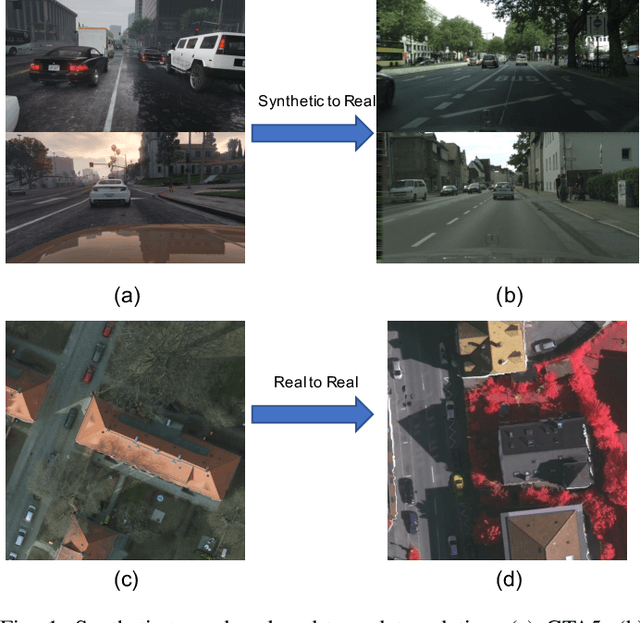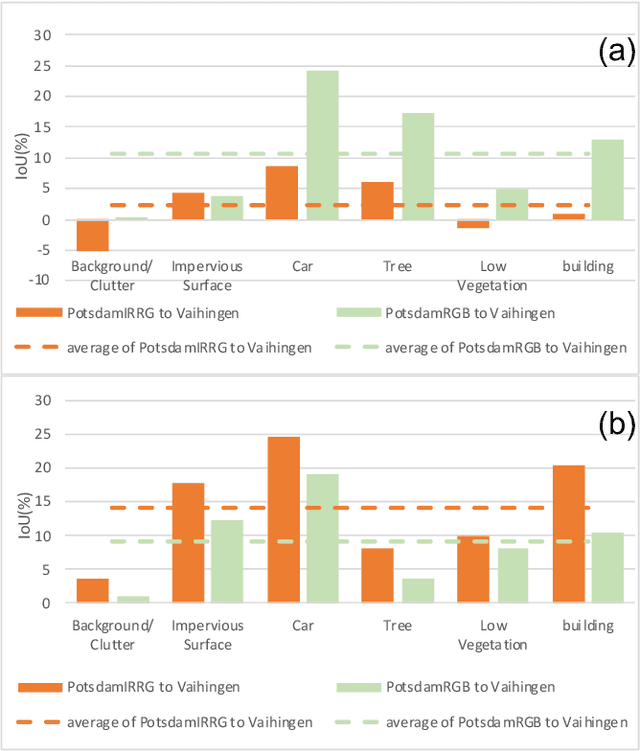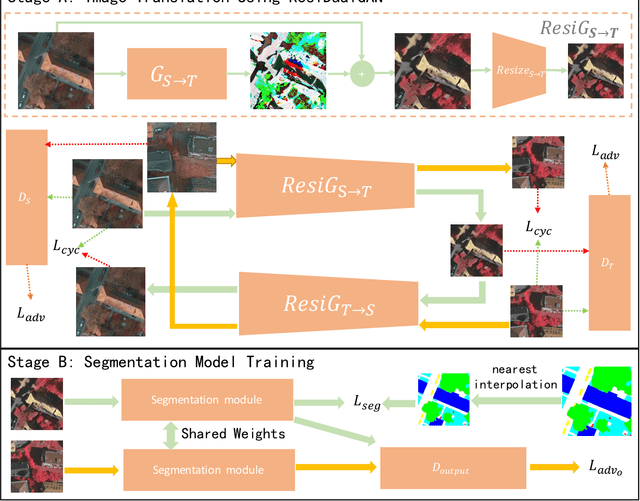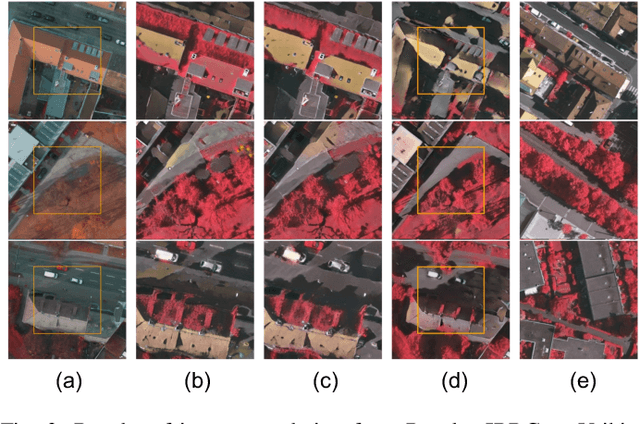ResiDualGAN: Resize-Residual DualGAN for Cross-Domain Remote Sensing Images Semantic Segmentation
Paper and Code
Jan 27, 2022



The performance of a semantic segmentation model for remote sensing (RS) images pretrained on an annotated dataset would greatly decrease when testing on another unannotated dataset because of the domain gap. Adversarial generative methods, e.g., DualGAN, are utilized for unpaired image-to-image translation to minimize the pixel-level domain gap, which is one of the common approaches for unsupervised domain adaptation (UDA). However, existing image translation methods are facing two problems when performing RS images translation: 1) ignoring the scale discrepancy between two RS datasets which greatly affect the accuracy performance of scale-invariant objects, 2) ignoring the characteristic of real-to-real translation of RS images which brings an unstable factor for the training of the models. In this paper, ResiDualGAN is proposed for RS images translation, where a resizer module is used for addressing the scale discrepancy of RS datasets, and a residual connection is used for strengthening the stability of real-to-real images translation and improving the performance in cross-domain semantic segmentation tasks. Combining with an output space adaptation method, the proposed method greatly improves the accuracy performance on common benchmarks, which demonstrates the superiority and reliability of ResiDuanGAN. At the end of the paper, a thorough discussion is also conducted to give a reasonable explanation for the improvement of ResiDualGAN.
 Add to Chrome
Add to Chrome Add to Firefox
Add to Firefox Add to Edge
Add to Edge